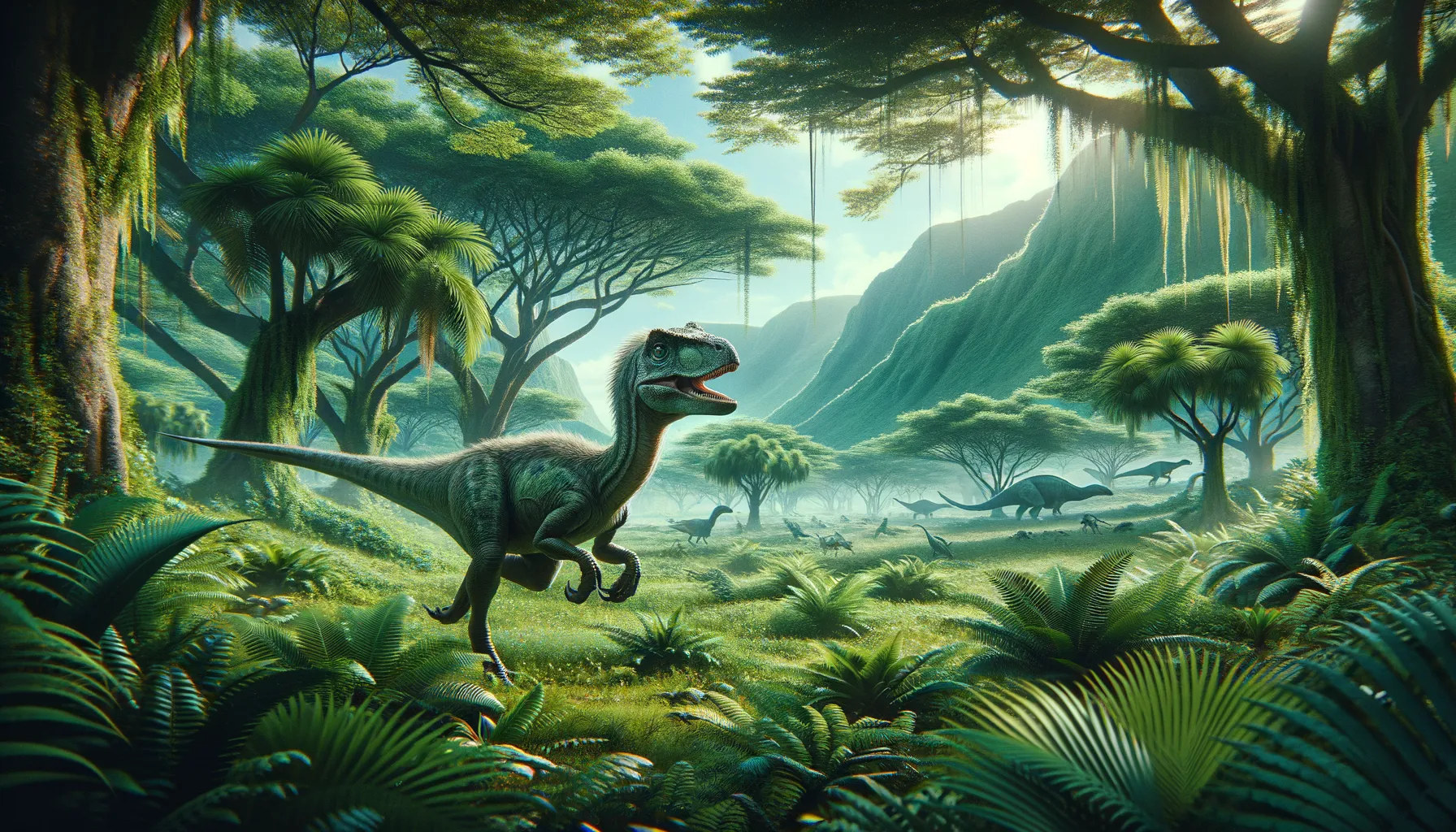
Lewisuchus
Swift predator from the dawn of dinosaurs!
Period
Triassic
Length
Its length was approximately 2.5 meters.
Height
It stood about 0.6 meters tall at the hips.
Weight
Lewisuchus weighed around 10 kilograms.
Lewisuchus was an early dinosaur relative from the Triassic period, known for being small and agile. With its nimble form, Lewisuchus likely played a significant role in its ecosystem, navigating terrestrial landscapes effectively. As a member of the group known for giving rise to dinosaurs, studying Lewisuchus helps scientists understand the evolutionary transitions that led to the dominance of dinosaurs.
Diet
Lewisuchus was likely a carnivore, feeding on smaller animals that were present during the Triassic period. Its agile build suggests it may have been an opportunistic hunter, targeting insects and small vertebrates.
Hunting
Lewisuchus probably used its speed and agility to ambush prey efficiently. It might have relied on a combination of stealth and swift bursts of speed to catch unsuspecting animals within its vicinity.
Environmental challenges
During its time, Lewisuchus faced changing climates as Earth transitioned from the Permian to the Triassic. This period experienced volcanic activity and the warming of global temperatures. Lewisuchus had to adapt to fluctuating resources and competition from other emerging terrestrial vertebrates. Survival depended on its adaptability to varying and sometimes harsh environmental pressures.
Speed
Lewisuchus was likely swift due to its lightweight build.
Lifespan
Its lifespan is not precisely known but was likely short.
First discovery
It was first discovered in Argentina in the 1960s.
Fun Facts
- Lewisuchus was a small dinosaur-like reptile, living around 240 million years ago during the Triassic period.
- Despite its appearance, Lewisuchus is actually closer to crocodiles and birds than to traditional dinosaurs.
- It was only about 3 feet long, roughly the size of a large dog.
- Unlike the giant dinosaurs that came later, Lewisuchus was lightweight and agile, making it a skilled predator.
- The name Lewisuchus means 'Lewis Crocodile', named after its discoverer, Alfred Romer, who honored his colleague Arnold Lewis.
- Lewisuchus lived in what is now Argentina, providing insights into early dinosaur relatives from South America.
- Its hind limbs were significantly longer than its front limbs, suggesting it was likely a fast runner.
Growth and Development
Lewisuchus would have started life as a small hatchling, similar to modern reptiles. Rapid growth rates would have been essential for young individuals to avoid predation. Its life cycle involved reaching maturity quickly to ensure reproductive success in a challenging environment.
Habitat
Lewisuchus lived in what is now Argentina, which was characterized by a mix of open landscapes and scattered vegetation. This habitat provided both cover for hiding and open spaces for hunting. The region experienced seasonal variations, necessitating adaptability to different environmental conditions.
Interaction with other species
Lewisuchus likely shared its habitat with various early archosaurs and other reptile species. It may have competed for resources such as food and shelter. As a smaller predator, it might have avoided larger contemporaries while coexisting with species of comparable size.
Natural lifespan
The natural lifespan of Lewisuchus was possibly quite short, given its size and the ecological pressures of its time.
Reproduction
Like many early reptiles, Lewisuchus likely laid eggs in nests. It is presumed to exhibit limited parental care, as with most reptiles, with hatchlings being mostly independent upon birth.
Social behaviour
Lewisuchus may have exhibited solitary behavior, similar to many small predators today. However, temporary groupings could have occurred for specific activities like migration or exploiting food resources.
Fossil locations
Fossils of Lewisuchus have been primarily found in Argentina, specifically in the Ischigualasto Formation. This site provides significant insights into Late Triassic ecosystems. Discoveries have helped paleontologists piece together the environment and evolutionary context of early dinosaur relatives.
